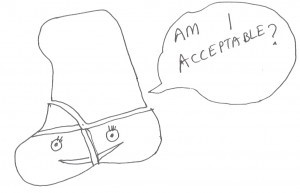ACCEPTABILITY CRITERIA FOR REDUCTION IN PAEDIATRIC FRACTURES

Taral Nagda taralnagda@gmail.com
UPPER LIMB FRACTURES
Proximal humerus:
- > 11 years of age: > 50 deg. Contact < 20 deg. angulation
- < 11 years of age: relatively greater displacement and angulation can be accepted. Good to excellent long term outcomes can be expected regardless of the # displacement.
Shaft humerus:
- Internal rotation: < 15 deg
- Shortening: upto 1 to 2 cms.
- Displacement and angulation:
- < 5 years : Total displacement, Upto 70 deg. angulation
- 5 to 12 years: 40 to 70 deg. angulation
- > 12 years : 50 % contact , < 40 deg. angulation
Supracondylar fracture humerus
- Anterior humeral line transecting capitellum
- Baumann angle – 70-78 deg. or equal to the other side
- Intact olecranon fossa
- Translation upto 30 %
- Rotations 20-30 degrees
- Varus/ valgus angulation not acceptable
Radius ulna
- < 9 years – 15 deg. Angulation, 45 deg. Malrotation, Complete displacement, Straightening of radius
- 9-14 years– 10 deg. Angulation, 30 deg. malrotation, Complete displacement, Some loss of radial bow
Fracture radial neck
- Younger children: 30-45 degrees
- Older Children: 15 degrees
LOWER LIMB FRACTURES
Fracture neck femur :
Only anatomical reduction is acceptable
Fracture shaft femur:
- 0-6 months of age:< 1.5 cm. Of shortening, < 30 deg angulation in varus valgus plane,< 30 deg. angualtion in AP plane
- 6 months -6 years: < 2 cms of shortening,< 15 deg. angulation in varus valgus plane,< 20 deg. anterior angulation
- 6 – 10 years< 1.5 cms. shortening, < 10 deg. varus valgus angulation, < 15 deg. AP angulation
- > 10 years< 1 cm shortening,< 5 deg. varus valgus angulation,< 10 deg. AP angulation
Fracture – separation of distal physis of femur
In Salter Harris type 1 and 2
- < 10 years < 20 deg. anterior or posterior angulation
- > 10 years Only minimal AP angulation
- < 5 deg. varus valgus angulation
In Salter Harris type 3 and 4
- Anatomical reduction and ORIF
Fracture tibial tuberosity
Only minimally displaced fractures with possible active extension of knee to 0 deg. can be acceptable. Rest require ORIF
Fracture Patella
- < 3 mm articular step off
- < 3 mm diastasis on xray
- Intact extensor mechanism
Fracture of tibia and fibula
- Proximal metaphysis :
Closed reduction to anatomic position or slight varus is acceptable
- Diaphysis:
| < 8 years | > 8 years | |
| Varus | <10 deg. | < 5 deg. |
| Valgus | < 5 deg. | < 5 deg. |
| Ant. angulation | < 10 deg. | < 5 deg. |
| Post. Angulation | < 5 deg. | < 0 deg. |
| Shortening | <10 mm | < 5 mm |
| Rotation | < 5 deg. | < 5 deg. |
- Distal tibial fractures
- Salter Harris type I & II
(i) in patients with atleast 2 years of growth remaining: < 15 deg. of posterior angulation,< 10 deg. of valgus angulation,0 deg. of varus angulation
(ii) in patients with less than 2 years of growth remaining Angulation in all planes < 5 deg.
- Salter Harris type III & IV
< 2 mm displacement
Bibliography
- Lovell and winter pediatric Orhtopaedics 5thedition Morrissey and Weinstein.2001 ; ; Lippincott , Williams and Wilkins
- . Hansen B, Grieff J. Fractures of the tibia in children. Acta
Orthop Scand 1976;47:448.
- Shannak A. Tibial fractures in children: follow-up study. J Pedi
atr Orthop 1988;8:306.
- Dietz F, Merchant T. Indications for osteotomy of the tibia in
children. J Pediatr Orthop 1990; 10:486.
- Yang J, Letts R. Isolated fractures of the tibia with intact fibula
in children: a review of 95 patients. / Pediatr Orthop 1997:17:347
- Children’s Orthopaedics, Mercer Rang , 2ndedition; 2005; Lippincott , Williams and Wilkins
- Rockwood & Wilkins’ Fractures In Children ; 5th Edition ; Beaty & Kasser ; Lippincott , Williams and Wilkins
- Campbell’s operative Orthopaedics,2007; 11thedition, S. Terry Canale , James H. Beaty; Mosby publications